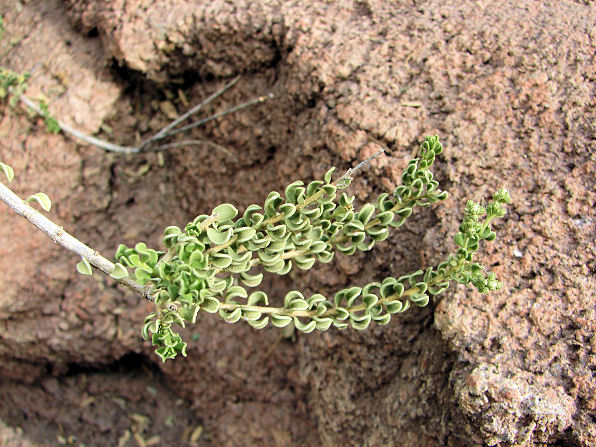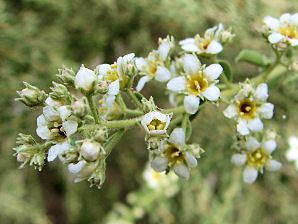Xeriscape Landscape Plants For The Arizona Desert Environment
Pictures, Photos, Reviews, Planting Information, & Reviews.
Shrubs.
Sandpaper Bush, Mortonia scabrella.
We Are Proud Of Our SafeSurf Rating!
Click On Any Of The Following Links By Amazon.Com
For Books, & Videos About Wildflowers Of Arizona & The Southwest USA. No Obligation!
 |
| Sandpaper Bush, Mortonia scabrella. Photo Taken September 29, 2006. Arizona-Sonora Desert Museum, Near Tucson, Arizona. |
|---|
 |  |
| Sandpaper Bush Leaves. Mortonia scabrella. | Sandpaper Bush Flowers. Mortonia scabrella. |
|---|---|
 | |
| Sandpaper Bush. Seed Pods. Mortonia scabrella. | Sandpaper Bush. Seed Pods. Mortonia scabrella. |
Sandpaper Bush.
We wish to thank Wikipedia, the free encyclopedia for some of the information on this page. We share images and information with Wikipedia. Mortonia scabrella is a scabrous evergreen perennial shrub about 4 - 6 feet tall.
Height: Up To About 4 - 6 feet tall.
Quick Notes:
Height: Up to 20 - 40 inches tall with similar spread.
Flowers: Orange, flower heads appear at the ends of 12 - 18 inch light green stems. Flowers are up to 2 1/2" across, consisting of ray florets with uneven cut margins, and about 12 orangish disk florets.
Flowering Time: March - May. Sometimes all summer.
Leaves: Compound, Dark Green, about 5 inches long, toothed leaflets about 3 inches long, ovate.
Found: Native to Mexico, and Peru.
Hardiness:
Soil pH requirements:
Sun Exposure:
Elevation: Naturally from 0 - 5,000 Feet.
Habitat: Chalky/alkaline, Dry, Sandy, Well-drained/light soils. An ideal landscape plant in Arizona.
Miscellaneous: Flowering Photo Taken April 19, 2008. Arizona-Sonora Desert Museum, near Tucson, Arizona.
|
We Are Proud Of Our SafeSurf Rating!
Click On Any Of The Following Links By Amazon.Com
For Books, & Videos About Wildflowers Of Arizona & The Southwest USA. No Obligation!
| © 1966 - Present, Audrey, Eve, & George DeLange |
